- Overview of Miltonia Orchids
- Appearance
- Cultivation
- Popular Varieties
- Uses
- Conclusion
- Benefits of Growing Miltonia Orchids at Home
- Choosing the Right Environment
- Temperature
- Humidity
- Light
- Air Circulation
- Watering and Fertilizing
- Conclusion
- Light and Temperature Requirements for Miltonia Orchids
- Light Requirements:
- Temperature Requirements:
- Humidity and Air Circulation for Miltonia Orchids
- Ideal Humidity Levels
- Air Circulation
- Tips for Maintaining Humidity and Air Circulation
- Proper Care and Maintenance
- Light Requirements
- Temperature
- Watering
- Fertilization
- Potting and Repotting
- Humidity
- Watering and Fertilizing Miltonia Orchids
- Watering
- Fertilizing
- Tips for Watering and Fertilizing Miltonia Orchids
- Pruning and Repotting Miltonia Orchids
- Pruning
- Repotting
- Common Pests and Diseases
- Pests
- Diseases
- Identifying and Treating Pest Infestations
- Identifying Common Orchid Pests
- Treating Pest Infestations
- Preventing Pest Infestations
- Q&A:
- What are some important tips for growing Miltonia orchids at home?
- How much light do Miltonia orchids need?
- What temperature is ideal for Miltonia orchids?
- Do Miltonia orchids require high humidity?
- How often should Miltonia orchids be watered?
- What kind of potting mix should be used for Miltonia orchids?
- Video: 7 Tips for Growing and Reblooming Miltoniopsis || ORCHID CARE
Miltonia, commonly known as Pansy Orchids, are one of the most beautiful and elegant orchids you can grow at home. With their vibrant colors, intricate patterns, and delicate fragrance, these orchids are a true delight for any orchid enthusiast.
Native to the cool, misty forests of Brazil, Miltonia orchids thrive in similar conditions in your home. They prefer bright, indirect light, high humidity, and cool temperatures between 60-70°F (15-21°C). It’s important to provide them with a well-draining potting mix that allows air to circulate around their roots.
Tip: Use a mix of sphagnum moss, bark, and perlite for the best results. Make sure to water the orchid thoroughly, allowing water to run through the potting mix, and then let it dry out slightly before watering again.
Miltonia orchids are known for their large, showy flowers that can last for several weeks. Their blooms come in a variety of colors, ranging from shades of pink and purple to white and yellow. They often have unique patterns and speckles, adding to their charm and beauty.
With proper care and attention, Miltonia orchids can be a rewarding addition to your indoor garden. Whether you’re a seasoned orchid grower or a beginner, these stunning orchids will captivate your senses and bring joy to your home.
Overview of Miltonia Orchids
Miltonia orchids, also known as pansy orchids, are a popular choice among orchid enthusiasts for their beautiful flowers and relatively easy care requirements. They are native to the cloud forests of Brazil and other parts of South America and belong to the Oncidium alliance of orchids.
Appearance
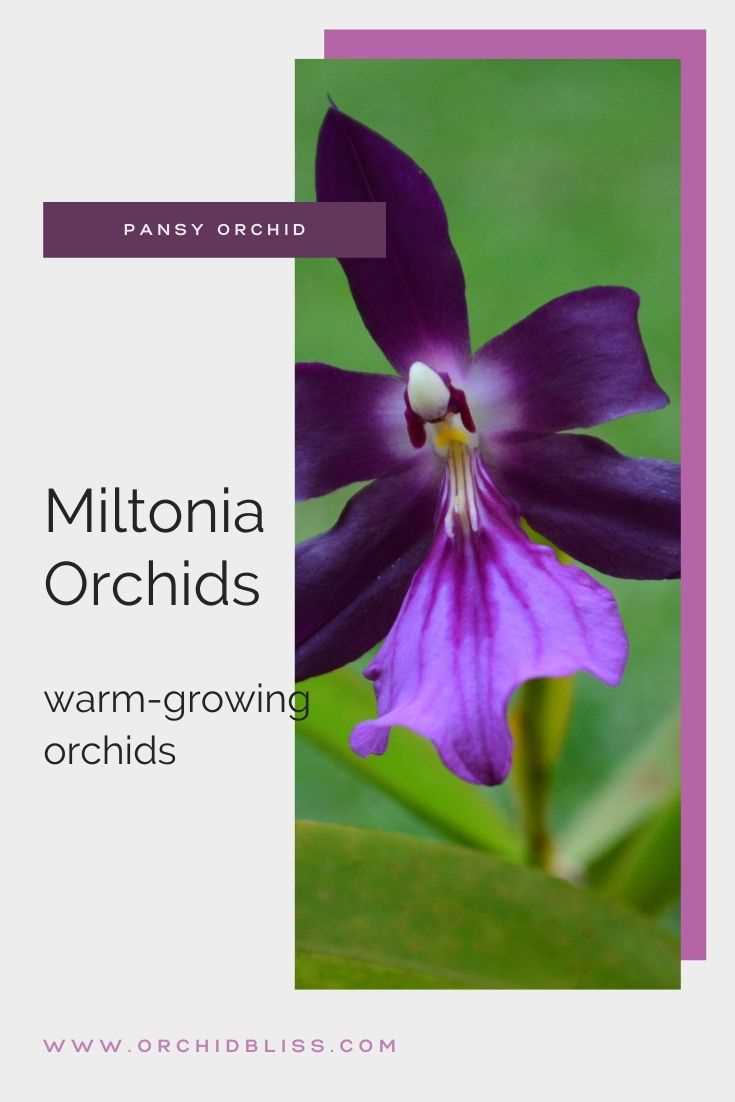
Miltonia orchids have large, flat pseudobulbs and long, thin leaves. The pseudobulbs store water and nutrients for the plant, and the leaves provide energy through photosynthesis. The flowers of Miltonia orchids are often fragrant and come in a variety of colors, including shades of white, yellow, pink, and purple. The characteristic shape of their flowers has earned them the nickname “pansy orchids.”
Cultivation
Miltonia orchids are generally considered to be easier to grow than some other orchid varieties. They prefer moderate light levels, with indirect or filtered light being ideal. Temperatures around 65-80°F (18-27°C) are suitable for these orchids, with a slight drop in temperature at night being beneficial. They require high humidity and should be watered regularly to keep the roots moist. It is important to provide good air circulation to prevent fungal diseases.
Popular Varieties
There are several popular varieties of Miltonia orchids that are favored by orchid enthusiasts. Some notable varieties include:
- Miltonia spectabilis: This variety has large, showy flowers and is known for its strong, sweet fragrance.
- Miltonia candida: Also known as the white pansy orchid, this variety produces beautiful white flowers with a yellow center.
- Miltonia clowesii: This variety features flowers with a unique combination of pink, yellow, and purple colors.
Uses
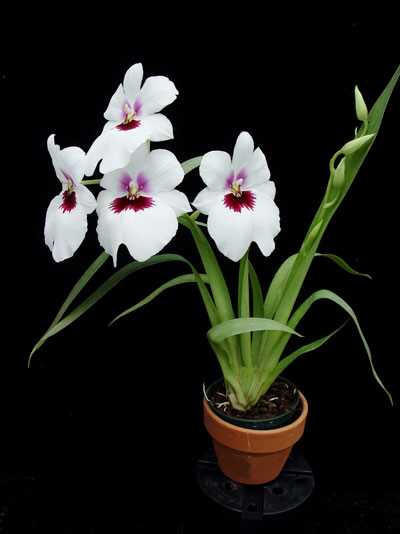
Miltonia orchids are commonly used in floral arrangements and as potted plants for interior decoration. Their vibrant and fragrant flowers add a touch of elegance and beauty to any space. Some individuals also enjoy growing Miltonia orchids as a hobby or as part of a collection of orchid species.
Conclusion
Miltonia orchids are a popular choice for orchid enthusiasts due to their stunning flowers and relatively easy care requirements. With the right conditions and care, they can thrive and bring beauty to indoor spaces. Whether you’re a seasoned orchid grower or a beginner, Miltonia orchids can be a rewarding addition to your collection.
Benefits of Growing Miltonia Orchids at Home
- Enhances Indoor Air Quality: Miltonia orchids absorb pollutants and release oxygen, helping to improve the air quality in your home.
- Boosts Mood and Reduces Stress: The vibrant colors and beautiful blooms of Miltonia orchids can uplift your mood and create a peaceful atmosphere, reducing stress and anxiety.
- Purifies the Air: Orchids are natural air purifiers, filtering and removing toxins, such as formaldehyde and xylene, from the air in your home.
- Improves Cognitive Function: Studies have shown that being surrounded by nature and plants can improve concentration, memory, and overall cognitive function.
- Brings Natural Beauty Indoors: Miltonia orchids are known for their exquisite and intricate blooms, bringing natural beauty and elegance to any indoor space.
- Low Maintenance: Miltonia orchids are relatively easy to care for, requiring moderate light, consistent watering, and occasional fertilization.
- Long-Lasting Blooms: With proper care, Miltonia orchids can produce blooms that last for several weeks, providing a long-lasting display of beauty.
- Great for Beginners: Miltonia orchids are a good choice for beginners in orchid growing due to their hardiness and forgiving nature.
Choosing the Right Environment
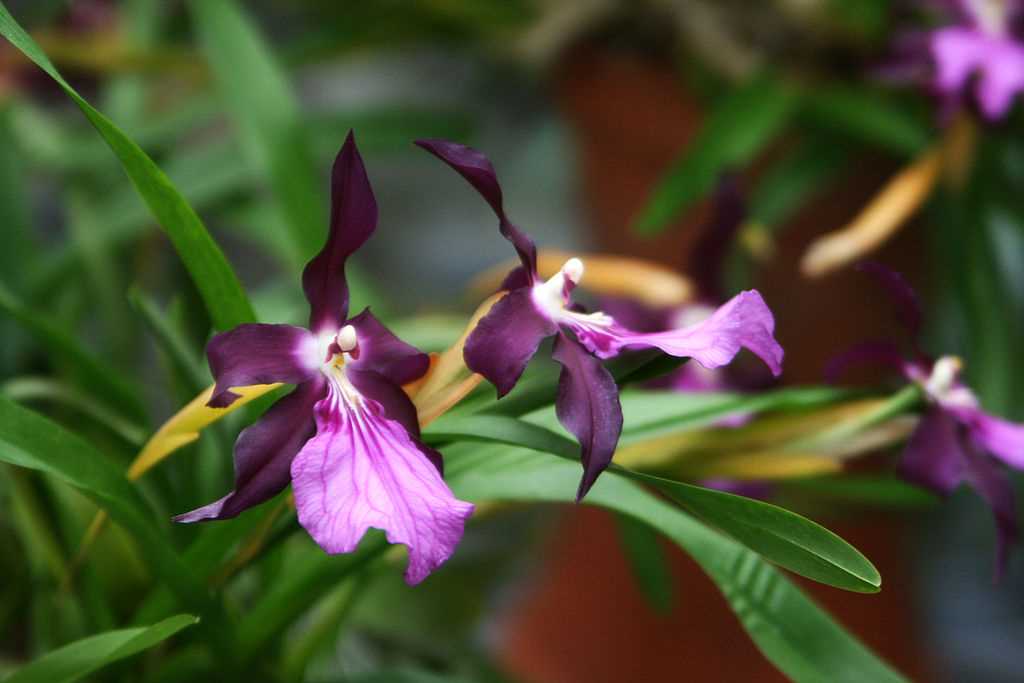
Growing Miltonia orchids requires creating the ideal environment for them to thrive. These orchids are native to Central and South America, which means they are adapted to specific conditions. By offering the right conditions, you can ensure your Miltonia orchids grow healthy and beautiful.
Temperature
Miltonia orchids prefer a moderate temperature range. During the day, they enjoy temperatures between 70°F and 80°F (21°C-27°C), while at night, they prefer slightly cooler temperatures, ranging from 60°F to 65°F (15°C-18°C). It’s important to maintain a consistent temperature as extreme fluctuations can stress the orchids and lead to poor growth.
Humidity
Miltonia orchids thrive in high humidity environments. Ideally, the relative humidity should be around 60-70%. To achieve this level of humidity, you can use a humidifier or place the orchids on a tray filled with water and pebbles, making sure the water doesn’t touch the bottom of the pots. Regular misting is also beneficial for maintaining the proper humidity levels.
Light
When it comes to lighting, Miltonia orchids prefer bright, indirect light. Placing them near a north or east-facing window is ideal as it provides them with the right amount of light without direct exposure to the harsh afternoon sun. If natural light is insufficient, you can supplement it with fluorescent grow lights placed at a suitable distance from the orchids.
Air Circulation
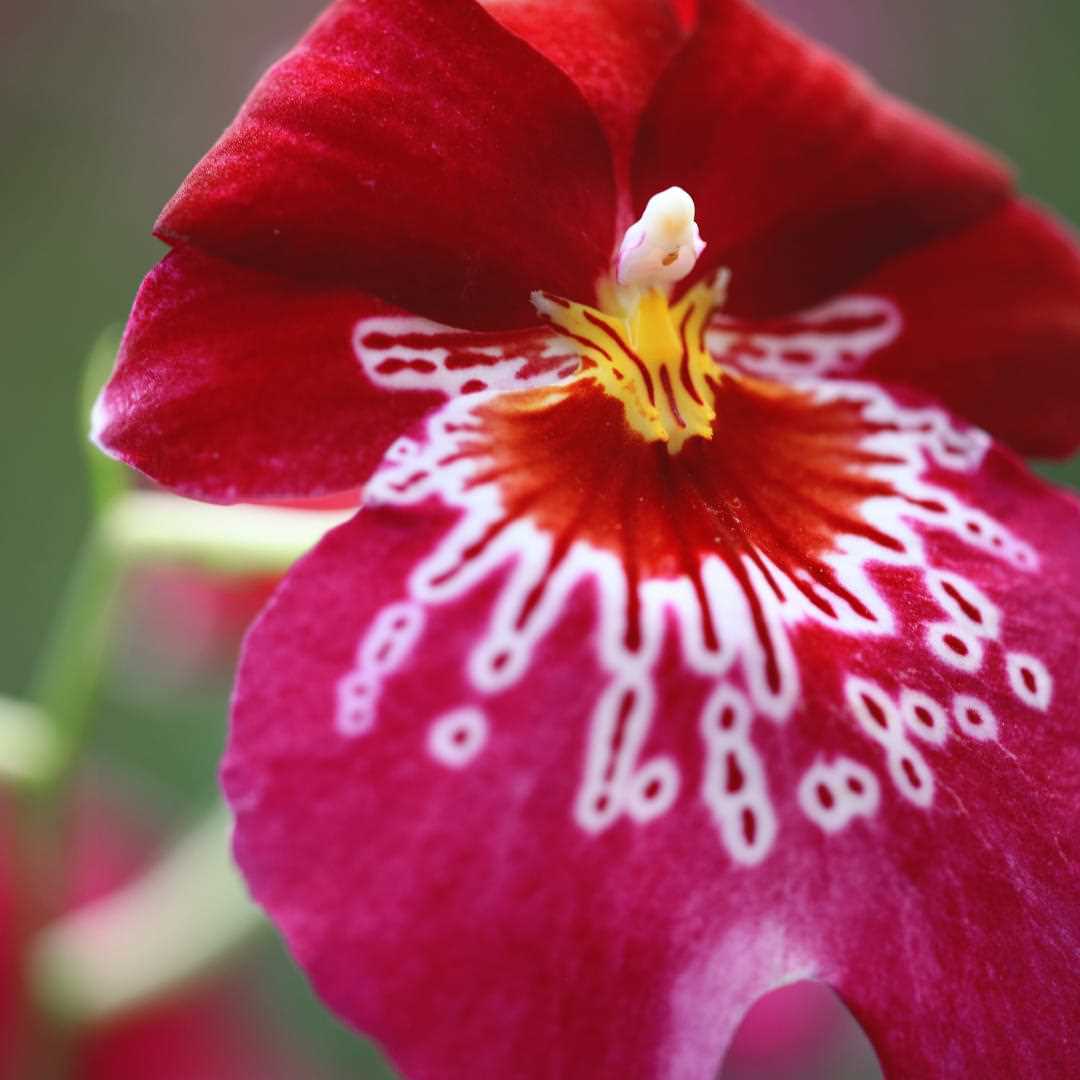
Adequate air circulation is crucial for Miltonia orchids as it helps prevent the growth of fungi and pests. Placing the orchids in a well-ventilated area or using a small fan to circulate the air can greatly benefit their overall health. However, avoid placing them in drafty areas as excessive airflow can dry out the orchids.
Watering and Fertilizing
Miltonia orchids prefer to be kept slightly moist. Water them thoroughly when the top inch of the potting mix feels dry, but avoid keeping them constantly wet. Orchid-specific fertilizers can be applied every two weeks during the growing season to provide the necessary nutrients. Dilute the fertilizer to half the recommended strength to avoid burning the orchid’s sensitive roots.
Conclusion
By providing the right environment for your Miltonia orchids, you can ensure their overall health and beauty. Pay attention to the temperature, humidity, light, air circulation, watering, and fertilization needs of these orchids to create an optimal growing environment. With proper care, your Miltonia orchids will flourish and reward you with stunning blooms.
Light and Temperature Requirements for Miltonia Orchids
Miltonia orchids, also known as Pansy Orchids, require specific light and temperature conditions to thrive. Providing the right amount of light and maintaining the optimal temperature range can significantly impact their growth and flowering. Here are the light and temperature requirements for Miltonia orchids:
Light Requirements:
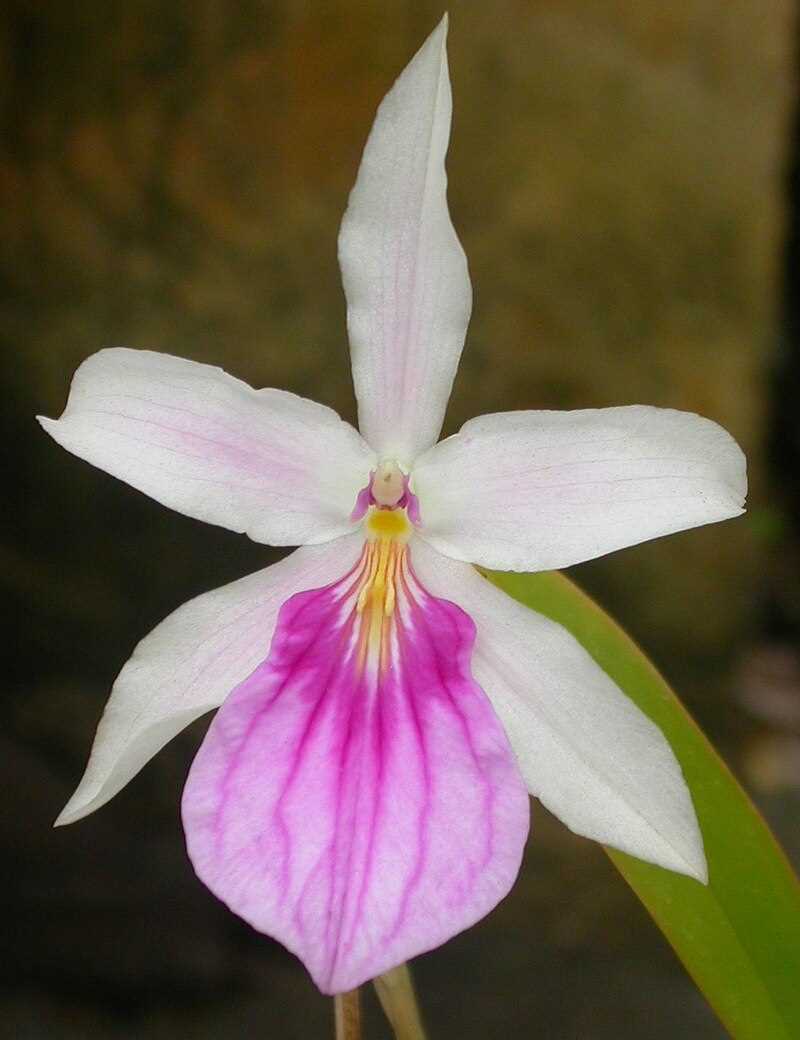
- Miltonia orchids thrive in bright, indirect light. They should be placed near a north or east-facing window where they can receive filtered sunlight.
- Avoid placing Miltonia orchids in direct sunlight as it can scorch their leaves and cause damage.
- If natural light is insufficient, artificial grow lights specifically designed for orchids can be used to supplement the lighting requirements.
Temperature Requirements:
- Miltonia orchids prefer temperatures that range between 60°F (15°C) and 80°F (27°C) during the day.
- Nighttime temperatures should be approximately 10°F (6°C) cooler than the daytime temperatures.
- It is crucial to avoid temperature extremes, as Miltonia orchids are sensitive and can’t tolerate frost or high temperatures above 90°F (32°C).
By providing the appropriate light and maintaining the ideal temperature range for Miltonia orchids, you can promote healthy growth and encourage beautiful blooms. Remember to regularly monitor the conditions and make adjustments as necessary to ensure the well-being of your orchids.
Humidity and Air Circulation for Miltonia Orchids
Miltonia orchids are native to the humid and tropical regions of South America, so providing the right humidity and air circulation is essential for their health and growth. Proper humidity levels and good air movement help mimic their natural environment and ensure the orchids thrive.
Ideal Humidity Levels
Miltonia orchids prefer a humidity level of around 50 to 70 percent. This higher humidity helps to keep their roots and foliage hydrated and prevents them from drying out. If the humidity level drops too low, the orchids may suffer from dryness and develop crispy leaves or wizened pseudobulbs.
To maintain the ideal humidity for Miltonia orchids, you can use a humidifier or create a humidity tray. A humidity tray involves placing a tray filled with water and pebbles beneath the orchid pots. As the water evaporates, it increases the surrounding humidity. Additionally, grouping orchids together can also help to create a microclimate with higher humidity levels.
Air Circulation
Adequate air circulation is crucial for Miltonia orchids to prevent the formation of stagnant air and reduce the risk of fungal infections. Good air movement around the plants also helps to control temperature variations and eliminate excess moisture on the foliage, which can lead to rot and diseases.
To improve air circulation for your Miltonia orchids, you can use a small fan placed nearby on a low setting. This gentle breeze helps to keep the air flowing without causing damage to the delicate blooms or leaves. Keep in mind that orchids should not be exposed to strong drafts or cold air, as they prefer a stable and moderate airflow.
Tips for Maintaining Humidity and Air Circulation
- Monitor the humidity levels using a hygrometer to ensure they stay within the ideal range.
- Place orchids in a room with adequate ventilation to promote air circulation.
- Position the orchids away from heating or cooling vents to avoid exposure to fluctuating temperatures or drafts.
- Avoid overcrowding the orchids, as this can impede air circulation and increase the risk of fungal diseases.
- Mist the orchids with clean water occasionally to provide a boost of moisture.
By maintaining the proper humidity levels and ensuring good air circulation, you can create an optimal environment for your Miltonia orchids to thrive and produce beautiful blooms.
Proper Care and Maintenance
Proper care and maintenance are essential for growing beautiful Miltonia orchids at home. By providing the right conditions and following a few simple steps, you can ensure that your orchids thrive.
Light Requirements
- Place your Miltonia orchids in a location that receives bright, indirect light. Avoid exposing them to direct sunlight, as this can burn the leaves.
- Consider placing your orchids near a north or east-facing window. If natural light is not sufficient, you can also use fluorescent lights specifically designed for orchids.
Temperature
- Miltonia orchids prefer temperatures between 65°F and 75°F (18°C to 24°C) during the day. They can tolerate slightly cooler temperatures at night, ranging from 55°F to 60°F (13°C to 16°C).
- Avoid placing your orchids near drafts or vents, as they can be sensitive to temperature fluctuations.
Watering
- Water your Miltonia orchids thoroughly, allowing the water to drain completely. Ideally, you should water them about once a week.
- Before watering again, make sure the top inch of the potting medium has dried out. Overwatering can lead to root rot, while underwatering can cause dehydration.
- Avoid wetting the leaves or flowers, as this can encourage fungal and bacterial diseases. Water directly at the base of the plant, aiming for the roots.
Fertilization
- Feed your Miltonia orchids with a balanced orchid fertilizer every two weeks during the growing season (spring and summer). Use a diluted solution and follow the package instructions.
- During the dormant season (fall and winter), reduce the frequency of fertilization to every four to six weeks.
Potting and Repotting
- Miltonia orchids are usually potted in a loose, well-draining orchid mix consisting of bark chips, sphagnum moss, and perlite.
- Repot your orchids every one to two years or when you notice overcrowding. Choose a pot that allows for sufficient drainage and space for the roots to grow.
- When repotting, inspect the roots and remove any dead or decaying ones. Trim any excessively long roots to promote healthy growth.
Humidity
- Miltonia orchids thrive in high humidity environments. Consider using a humidifier to increase moisture levels, especially during dry winter months.
- You can also place your orchids on a tray filled with water and pebbles, ensuring that the bottom of the pot does not touch the water. This will create a humid microclimate around the plants.
Following these care and maintenance tips will help your Miltonia orchids stay healthy and produce stunning flowers year after year. With a little attention and care, you can enjoy the beauty of these orchids right in your own home.
Watering and Fertilizing Miltonia Orchids
Watering and fertilizing are essential for the health and growth of Miltonia orchids. Proper hydration and nutrient supply are key factors in ensuring their beautiful blooms and overall vitality. Here are some important guidelines to follow:
Watering
When it comes to watering Miltonia orchids, it’s important to strike a balance. These orchids prefer to be kept evenly moist, but they do not like to sit in water. Overwatering can lead to root rot, while underwatering can result in dehydration and stunted growth.
- Water your Miltonia orchids when the top inch of the potting mix feels slightly dry to the touch. This usually equates to watering every 7-10 days.
- Avoid waterlogging the potting mix by ensuring proper drainage. You can achieve this by using a well-draining potting mix or adding perlite or orchid bark to the mix.
- Water your Miltonia orchids thoroughly, allowing water to flow through the drainage holes of the pot. This helps to flush out any accumulated salts or impurities.
Fertilizing
Fertilizing your Miltonia orchids provides them with the necessary nutrients to thrive and produce bright, vibrant flowers. However, it’s important to use the right type and amount of fertilizer to avoid burning their sensitive roots.
- Use a balanced orchid fertilizer with a ratio such as 20-20-20 or 10-10-10. This ensures a well-rounded supply of essential nutrients.
- During the active growth period (spring and summer), fertilize your Miltonia orchids every two weeks. Dilute the fertilizer to half the recommended strength and apply it directly to the potting mix.
- Reduce the frequency of fertilizing to once a month during the dormant period (fall and winter). This allows the orchids to rest and prepare for their next flowering cycle.
- Always water your Miltonia orchids before applying fertilizer to prevent root burn.
Tips for Watering and Fertilizing Miltonia Orchids
Here are some additional tips to keep in mind:
- Monitor the moisture level of the potting mix by inserting your finger about one inch deep. If it feels damp, hold off on watering for a few more days.
- Avoid spraying water directly onto the orchid’s leaves or flowers, as this can increase the risk of fungal and bacterial infections.
- Consider using rainwater or distilled water for watering your Miltonia orchids, as they are sensitive to the chemicals commonly found in tap water.
- Observe your orchids closely for any signs of overwatering or underwatering, such as yellowing leaves, mushy roots, or wilting flowers. Adjust your watering routine accordingly.
- If you’re unsure about when or how much to water or fertilize, it’s always better to err on the side of caution and slightly underdo it rather than risk harming the plant.
By providing your Miltonia orchids with proper watering and fertilization, you can ensure their long-lasting health and beauty. Remember to closely observe their specific needs and adjust your care routine accordingly. With the right care, your Miltonia orchids will reward you with stunning displays of colorful flowers.
Pruning and Repotting Miltonia Orchids
Pruning and repotting are important practices for maintaining the health and beauty of your Miltonia orchids. Regular pruning helps to remove dead, damaged, or diseased parts of the plant, while repotting allows you to provide fresh growing medium and space for the orchid to grow.
Pruning
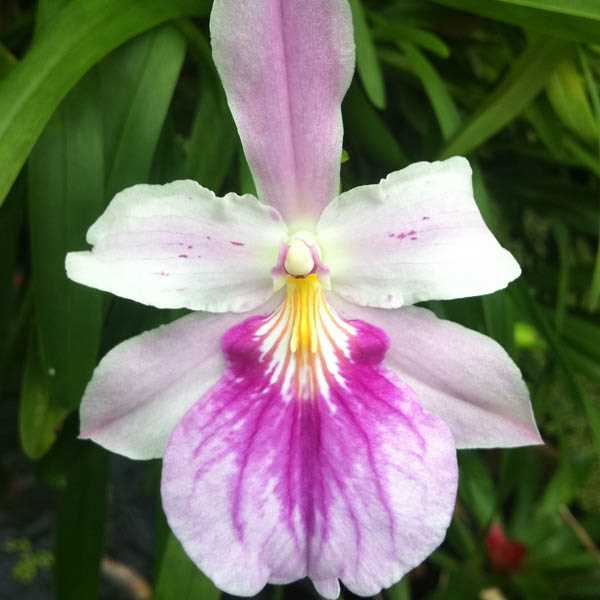
Pruning Miltonia orchids should be done after the plant has finished blooming. This is usually in the late spring or early summer. Here are the steps to follow for pruning:
- Inspect the plant and identify any dead, damaged, or diseased leaves or stems.
- Using clean and sharp pruning shears or scissors, cut the affected parts of the plant at the base.
- Make sure to sterilize your pruning tools before and after use to prevent the spread of any diseases.
- Remove any spent flowers or flower spikes to encourage the plant to focus its energy on new growth.
Pruning will help to keep your Miltonia orchids looking neat and healthy, and it can also prevent the spread of diseases or pests.
Repotting
Miltonia orchids should be repotted every 1-2 years, or when you notice that the potting medium has become decomposed or compacted. Here are the steps to follow for repotting:
- Select a new pot that is slightly larger than the current one to allow for growth.
- Prepare a fresh orchid potting mix that is well-draining and provides good air circulation.
- Gently remove the orchid from its current pot, taking care not to damage the roots.
- Remove any old potting medium and trim any dead or damaged roots.
- Place the orchid in the new pot and fill it with the fresh potting mix, making sure to position the plant at the same depth as before.
- Press down the potting mix gently to secure the plant.
- Water the plant thoroughly after repotting.
Repotting will provide your Miltonia orchids with fresh nutrients and growing medium, allowing them to thrive and grow more vigorously.
By regularly pruning and repotting your Miltonia orchids, you can ensure their long-term health and enjoy their beautiful blooms for years to come.
Common Pests and Diseases
While growing Miltonia orchids at home can be a rewarding experience, it is important to be aware of common pests and diseases that can affect these plants. Taking preventative measures and identifying issues early on can help ensure the health and longevity of your orchids.
Pests
1. Aphids: These small insects feed on plant sap and can cause leaves to curl and become distorted. Regularly inspect your Miltonia orchids and remove any aphids by hand or use an insecticidal soap.
2. Mealybugs: Mealybugs are small, white insects that are commonly found in orchids. They can cause a sticky residue on leaves and flowers and lead to a decline in plant health. Remove mealybugs manually or use insecticides specifically labeled for mealybug control.
3. Scale insects: Scale insects are often found on the undersides of leaves and can resemble small bumps or scaly patches. They can weaken the plant by feeding on its sap. Carefully scrape off scale insects or use horticultural oil to control their population.
Diseases
1. Fungal infections: Miltonia orchids are susceptible to various fungal infections, including black rot, gray mold, and powdery mildew. Fungal infections can cause leaf spots, stem rot, and flower blight. Avoid overwatering, improve air circulation, and apply fungicides when necessary.
2. Bacterial infections: Bacterial infections can cause rotting of roots, stems, and leaves in Miltonia orchids. Maintain proper hygiene by sterilizing pruning tools, avoid overwatering, and remove infected plant parts promptly. Copper-based bactericides can also be used to control bacterial infections.
3. Viral infections: Viral infections in orchids are usually incurable. They can cause mottled or distorted leaves and stunted growth. To prevent the spread of viral infections, maintain good sanitation practices and remove and destroy infected plants.
In addition to pests and diseases, Miltonia orchids can also experience nutritional deficiencies and environmental stress. It is important to provide proper care, from watering and fertilizing to providing the right temperature and light conditions, to keep your orchids healthy and thriving.
| Type | Identification | Treatment |
|---|---|---|
| Aphids | Small insects feeding on plant sap, causing curled and distorted leaves | Remove by hand or use insecticidal soap |
| Mealybugs | Small, white insects causing sticky residue on leaves and flowers | Remove manually or use insecticides labeled for mealybugs |
| Scale insects | Bumps or scaly patches on undersides of leaves | Scrape off or use horticultural oil |
| Fungal infections | Leaf spots, stem rot, and flower blight | Avoid overwatering, improve air circulation, and apply fungicides |
| Bacterial infections | Rotting of roots, stems, and leaves | Maintain hygiene, remove infected parts promptly, use bactericides |
| Viral infections | Mottled or distorted leaves, stunted growth | Prevent spread through sanitation, remove and destroy infected plants |
Identifying and Treating Pest Infestations
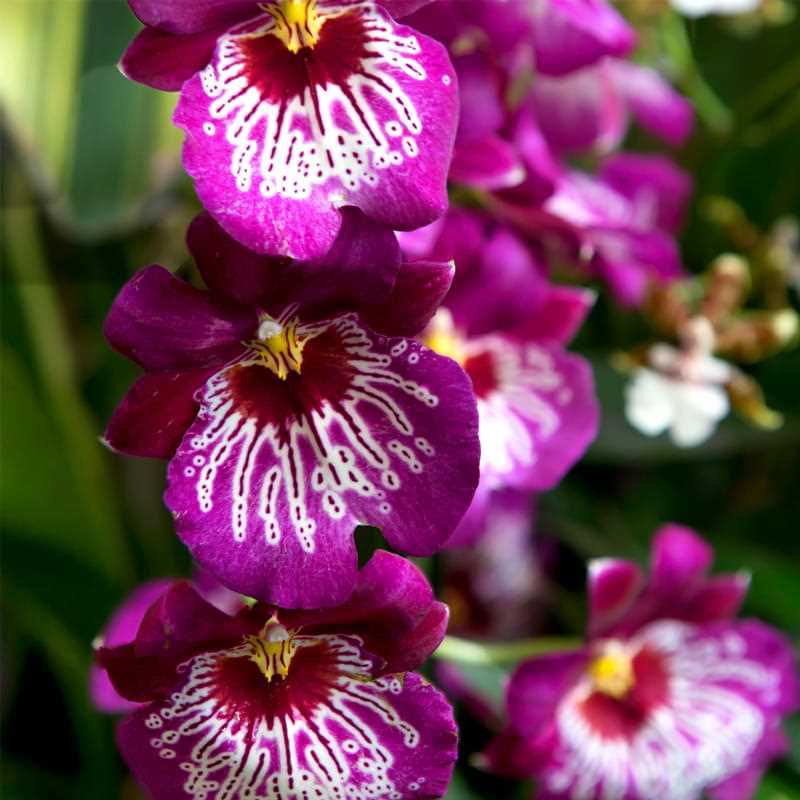
One of the challenges that orchid growers face is dealing with pest infestations. Pests such as aphids, mites, and mealybugs can wreak havoc on Miltonia orchids if not properly identified and treated. It is important to regularly inspect your plants for signs of pests and take immediate action to prevent further damage.
Identifying Common Orchid Pests
- Aphids: These tiny, pear-shaped insects are usually green or brown in color. They feed on the sap of orchid plants, causing leaves to curl and distort.
- Mites: These small insects are barely visible to the naked eye. They often form webs on the undersides of leaves and cause leaves to turn yellow or bronze before falling off.
- Mealybugs: These soft-bodied insects are covered in a white, waxy substance. They tend to cluster in protected areas, such as leaf axils or the base of the plant. Infested orchids may have stunted growth and deformed flowers.
Treating Pest Infestations
If you notice any signs of pest infestation on your Miltonia orchids, it is important to take prompt action to prevent the pests from spreading to other plants. Here are some common treatments for orchid pests:
- Insecticidal soap: This natural soap-based insecticide can be effective against aphids and mealybugs. Mix the recommended amount with water and spray it onto the affected areas of the plant.
- Neem oil: Neem oil is a plant-based insecticide that can be used to treat a variety of orchid pests. Mix the recommended amount with water and spray it onto the affected areas.
- Horticultural oil: This oil suffocates pests and can be used to control mites. Dilute the oil according to the instructions and apply it to the infested areas of the plant.
- Predatory insects: Introducing predatory insects, such as ladybugs or lacewings, can help control aphids and mites naturally. These insects feed on the pests and help keep their population in check.
Preventing Pest Infestations
Prevention is key to avoiding pest infestations in your orchids. Here are some measures you can take to prevent pests:
- Quarantine new plants: Before introducing a new orchid to your collection, keep it separate from your other plants for a few weeks to monitor for any signs of pests.
- Maintain good hygiene: Remove fallen leaves and other debris from around your orchids to eliminate hiding places for pests. Clean your tools between each use to prevent the spread of pests.
- Monitor humidity and air circulation: Pests thrive in humid and stagnant conditions. Ensure proper air circulation and control humidity levels to discourage pest infestations.
- Regularly inspect your plants: Check your orchids regularly for any signs of pests or damage. Early detection can help prevent the spread of infestations.
By identifying and treating pest infestations promptly, and taking preventive measures, you can keep your Miltonia orchids healthy and thriving for years to come.
Q&A:
What are some important tips for growing Miltonia orchids at home?
Some important tips for growing Miltonia orchids at home include providing them with the right amount of light, keeping the temperature and humidity levels stable, and maintaining a regular watering schedule. It is also important to use well-draining potting mix and to fertilize the orchids regularly.
How much light do Miltonia orchids need?
Miltonia orchids require bright but indirect light. They should be placed near a window where they can receive filtered sunlight. However, direct sunlight should be avoided as it can scorch the leaves of the orchids.
What temperature is ideal for Miltonia orchids?
The ideal temperature for Miltonia orchids is between 60°F and 75°F (15°C – 24°C) during the day, and slightly cooler at night. It is important to avoid extreme temperature fluctuations, as they can stress the plants and affect their growth.
Do Miltonia orchids require high humidity?
Yes, Miltonia orchids require high humidity levels to thrive. Ideally, the humidity should be between 50% and 70%. This can be achieved by placing the orchids on a humidity tray, using a humidifier or misting the plants regularly.
How often should Miltonia orchids be watered?
Miltonia orchids should be watered when the top inch of the potting mix feels dry to the touch. It is important to water the orchids thoroughly, allowing the excess water to drain out of the pot. Overwatering should be avoided as it can lead to root rot.
What kind of potting mix should be used for Miltonia orchids?
Miltonia orchids should be potted in a well-draining orchid mix that consists of bark, sphagnum moss, and perlite or other similar materials. This type of mix helps to prevent waterlogged roots and allows for good air circulation around the roots.
Video:
7 Tips for Growing and Reblooming Miltoniopsis || ORCHID CARE







